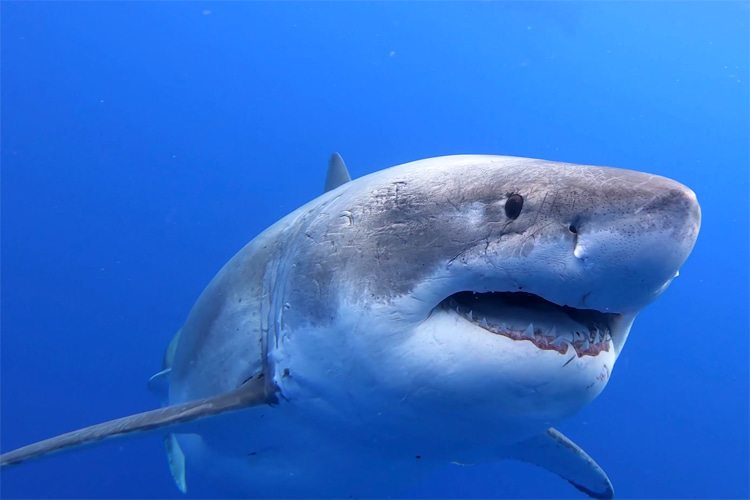

The heaviest reported weight for the species was 391 kg (862 lb). Occasionally, a female in excess of 3 m (9.8 ft) will weigh over 204 kg (450 lb). The blue shark is fairly elongated and slender in build and typically weighs from 27 to 55 kg (60 to 121 lb) in males and from 93 to 182 kg (205 to 401 lb) in large females. Occasionally, an outsized blue shark is reported, with one widely printed claim of a length of 6.1 m (20 ft), but no shark even approaching this size has been scientifically documented.

Large specimens can grow to 3.8 m (12 ft) long. The male blue shark commonly grows to 1.82 to 2.82 m (6.0 to 9.3 ft) at maturity, whereas the larger females commonly grow to 2.2 to 3.3 m (7.2 to 10.8 ft) at maturity. Like many other sharks, blue sharks are countershaded: the top of the body is deep blue, lighter on the sides, and the underside is white. Anatomy and appearance īlue sharks are light-bodied with long pectoral fins. Maximum lifespan is still unknown, but it is believed that they can live up to 20 years. They feed primarily on small fish and squid, although they can take larger prey. Blue sharks are viviparous and are noted for large litters of 25 to over 100 pups. It is listed as Near Threatened by the IUCN.Īlthough generally lethargic, they can move very quickly. Averaging around 3.1 m (10 ft) and preferring cooler waters, the blue shark migrates long distances, such as from New England to South America. The blue shark ( Prionace glauca), also known as the great blue shark, is a species of requiem shark, in the family Carcharhinidae, which inhabits deep waters in the world's temperate and tropical oceans.


 0 kommentar(er)
0 kommentar(er)
